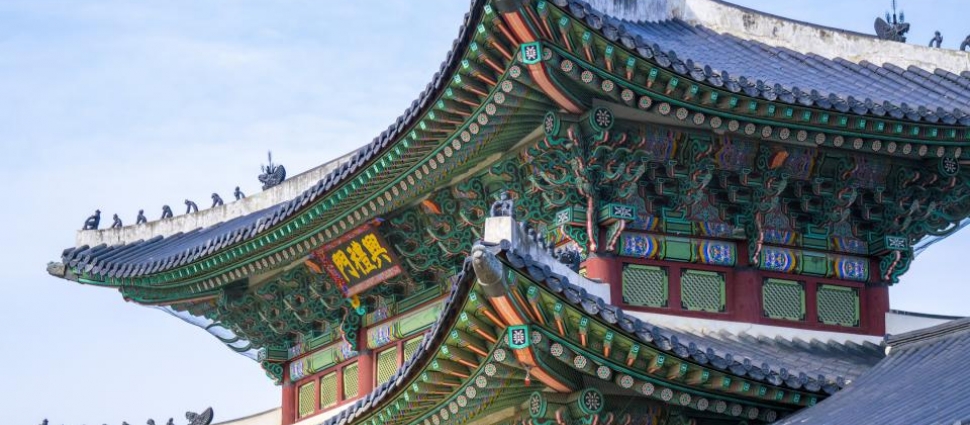John Ross and the Gospel in Korea

John Ross and the Gospel in Korea
In the autumn of 1874, the Scottish missionary John Ross arrived at a village known as “Korean Gate,” near the eastern border between Manchuria (in north-east China) and Korea. Sent to Manchuria by the Scottish United Presbyterian Mission, he had been working for the past two years to establish a church in Mukden (present-day Shenyang) and a missionary base in Fushun. But he was eager to learn more about the Korean people and their language.
The “Korean Gate,” seven days from Mukden, was one of the few places where merchants from Korea and China exchanged their products. Ross checked himself at an inn and announced that his room would be open for visitors. Curious about this tall, bearded westerner, Koreans dropped by his room from 8 in the morning until 10 at night, asking many questions and answering none. He later learned they considered him a spy.
The Translation of the Korean New Testament
Undeterred, he returned the next year, looking for a language teacher. Of the many visitors, no one offered to help, until evening, when a man lingered after the others had left, long enough to apply, in all secrecy, to the job. As a merchant, he had just lost all of his goods during a storm on the Yaloo River and had been wondering how to survive.
Before Ross’s departure, this man left his companions in the middle of the night to meet Ross at his next stop. If anyone had leaked the news that he was going to work for a foreigner, he and the prominent men in this family would be beheaded, and the others imprisoned.
Ross discovered, to his joy, that the Korean alphabet was phonetic and the language was simpler than Chinese. Together with another missionary, John MacIntyre, they studied the language and found other translators to help them in a massive project: the translation of the New Testament in spoken Korean. They started with the Gospel of Luke, which could be printed and distributed separately while the full translation was completed.
To print it, they needed a Korean who could set the type for the press. Once again, they found a man desperate for a job. He was a medicine peddler (or rather a charlatan) for Korean medicine, which the Chinese held in high esteem. Lacking in salesmanship’s skills, he had ended in debt, unable to pay for his inn.
“Had there been any alternative this man would not have been employed,” Ross wrote, “for a more unpromising individual I have not encountered. His eye was sleepy, his fingers clumsy, his gait slow, his thoughts of the most sluggish. To understand any process, he required four times as much explanation as any ordinary man. He was just able to keep the two printers going, setting four pages of type while they threw off three thousand copies. But though slow he soon proved himself trustworthy, carrying out satisfactorily whatever he had to do.”[1]
While typesetting, the printer started to read the text, and asked many questions. “By the time the Gospel of Luke was printed,” Ross said, “he became an applicant for baptism.”[2]
Founding Korean Churches Outside of Korea
Later, when another, more efficient Korean printer offered his services, Ross gave the first printer a different mission: now that he was baptized and had shown a good understanding of the Christian message, they sent him to bring a few hundred copies of the printed gospel to his native region. He returned in six months, saying he had sold them all. In fact, many people were interested and wanted to be baptized.
Ross couldn’t believe it. Surely, this man had been exaggerating. But six months later, the same man returned, after selling more copies, with the same story. Then, when a civil war forced some Koreans to find refuse in Manchuria, some told Ross that they had seen the printed gospel and that many had started to pray to the “God of Heaven.”
Finally convinced, Ross and another missionary, James Webster, started a long journey to the Manchurian valleys where Koreans had found refuge. They left in November, when the ice on the rivers allowed them to cross without bridges. Arriving two weeks later at their destination, they checked into an inn and threw themselves on the brick bed.
But their rest was to be short-lived “We were resting for but a few minutes when in marched a body of about a dozen Koreans, gentlemanly in appearance, garments, manner and speech. They came in to welcome us.”[3]
In the course of their visit, Ross and Webster baptized 85 people and received requests from others. When they returned the next summer, they found many more wanting to be baptized, in spite of violent persecution by their Chinese landlords who thought the missionaries were plotting against them.
How the Gospel Entered Korea
When one of the new converts moved to the capital of Korea, he took with him copies of the New Testament. The next year, he wrote to Ross asking for a visit, because thirteen of his friends wanted to be formed into a congregation. Ross didn’t believe he could enter Korea. The next year, however, he received a new request since, by that time, there were 79 believers.
Eventually, Korea opened its ports to foreigners, and the Presbyterian church in America was able to send some missionaries. When Ross arrived, Horace Underwood[4] was there, reaping the fruits of the 15,000 Korean gospels Ross had sent into the country.
Ross returned to Scotland in 1910 because of ill health, but continued to write and lecture until his death in 1915. Besides his translation of the New Testament, he left behind the first Korean primer and grammar and the first history of Korea in English, and a ground-breaking book on his methodology of missions, where he emphasized the importance of training local evangelists and understanding the local culture in order to communicate the gospel in ways that can be readily understood.
During his life, his efforts had often been opposed by the missionary board, who thought he should spend more time doing “actual” missionary work and less time translating and writing, especially in Korean, since Chinese was the language of literature and commerce. But the church in Korea wouldn’t likely have begun without his work. Today, hundreds of Korean and Chinese tourists to Scotland still visit Ross’s grave every year, recognizing him as the father of Korean Protestant churches.[5]
[1] John Ross, “The Christian Dawn in Korea,” Missionary Review of the World 4 (April, 1890): 241-248, Transcribed by Sung-Deuk Oak, http://koreanchristianity.cdh.ucla.edu/images/stories/1890_John_Ross.pdf
[2] Ibid.
[3] Ibid.
[5] A recent biography of John Ross has recently been published https://www.amazon.com/Power-Glory-Evangelisation-Manchuria-Korea/dp/152...





